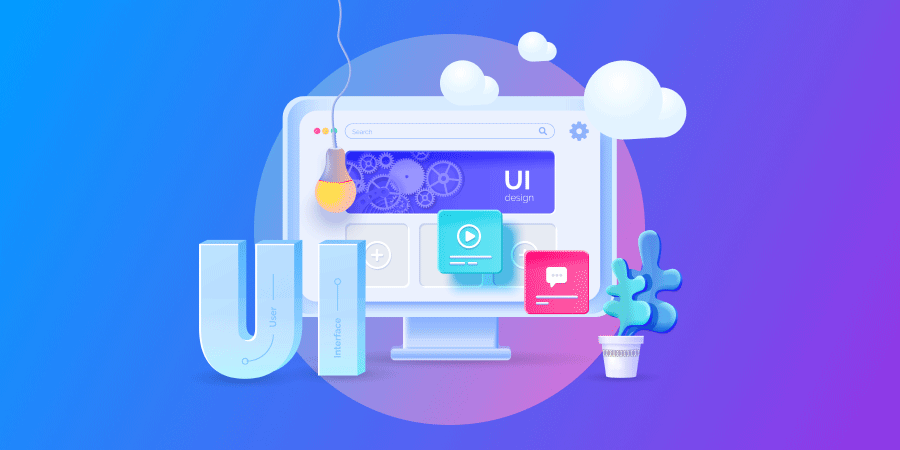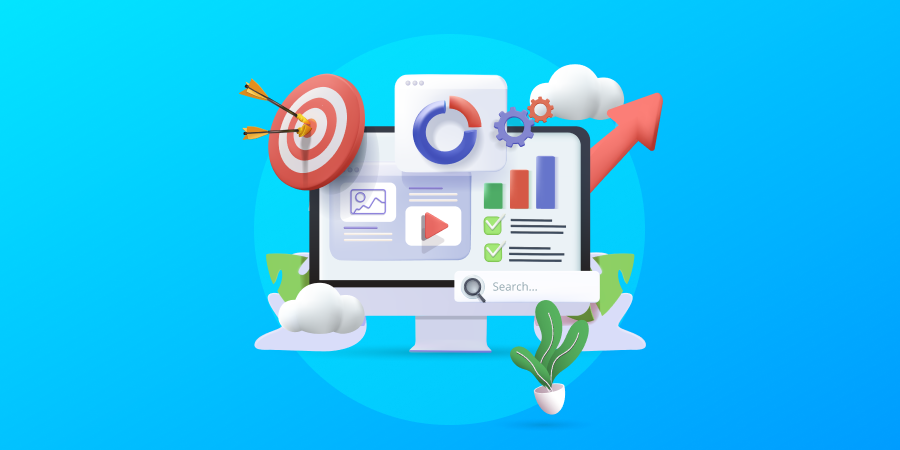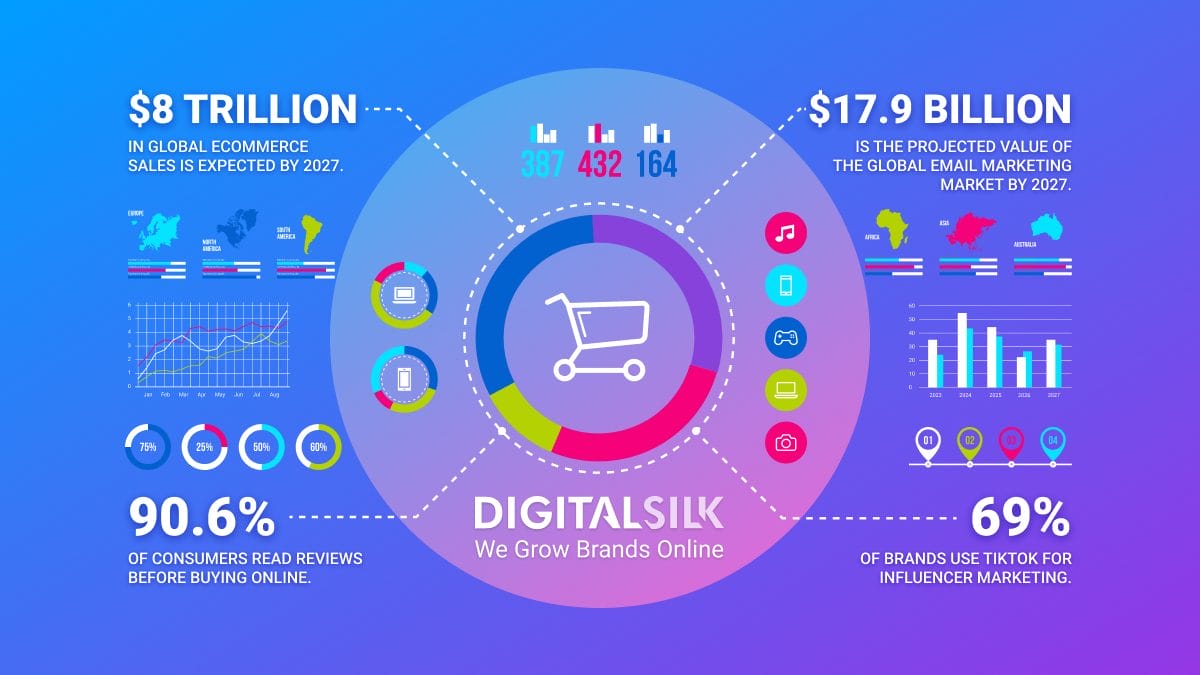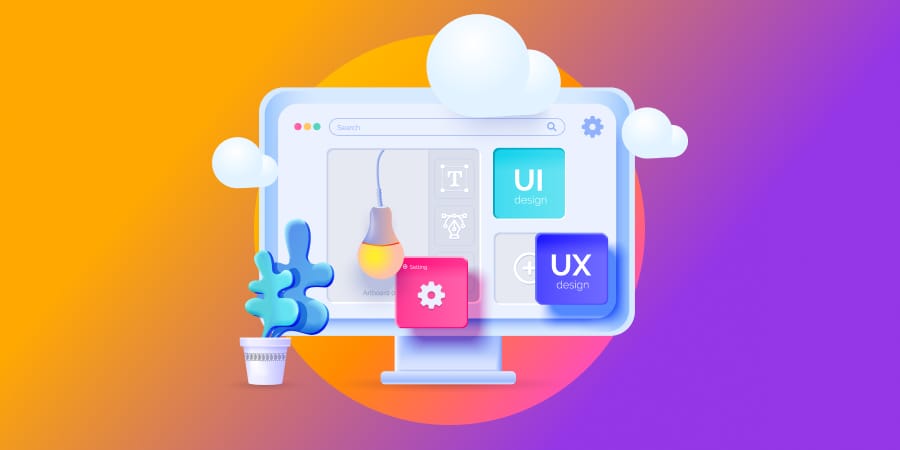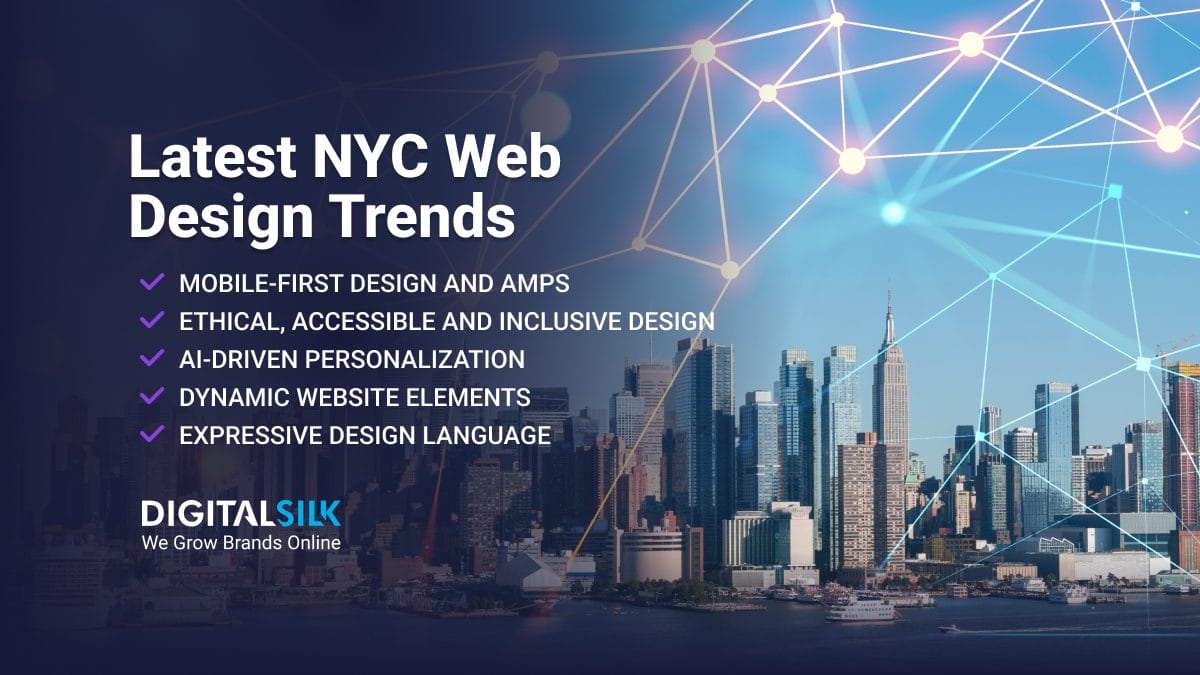Investing in web design boosts more than just a business image: for every dollar invested in UX, there’s $100 in return – that’s an ROI of 9,900%!
Establishing and adhering to a particular website design process that consists of essential steps helps bring structure and order into a web design process.
This, in turn, helps ensure highly-functioning, profitable websites that boost brand credibility.
In our previous article on the website development process, we talked about website planning and defining your website requirements.
This article discusses the stages of the website design process from planning to testing, explains why following a design process matters and defines steps to take in responsive UX planning.
Digital Silk builds custom websites. Request a quote
7 Steps Of The Website Design Process
The website design process is a documented outline of all the stages needed for the completion of a typical website project.
Digital agencies take this seven-step approach to designing and developing a website:
1. Digital Strategy
A digital or web strategist typically creates a digital strategy.
The strategy involves an in-depth overview of the client’s business, brand and digital marketing goals, resulting in a data-driven conversion funnel and user journey mapping.
A digital strategist typically begins the web design process with these steps:
- Client kick-off call: During the kick-off call, digital strategists present all participating team members to the client. The purpose of this is usually for both entities to get to know each other and for the client to be aware of the team’s expertise. Team members share their ideas with the client and ask the client questions based on their role in the project. During the call, digital agencies discuss the project’s process and timeline, workflow, regular meetings and reporting.
- Client questionnaire: This document outlines business objectives, acquisition of materials and other elements vital for the creation of the website. The client questionnaire is something agencies go through with the client at the kickoff call as they often send it to them before the meeting. The information these agencies gather helps with the website design process. Depending on the contract and the project, the questionnaire typically contains questions like:
- What does your company do and what is your value differentiation from your competitors?
- Who is your target audience?
- What are your objectives and expectations from this project?
- Please list up to five websites you like and explain why?
- Do you have any required features?
- What is your budget?
- Do you have any brand books?
- Did you develop a communication strategy?
- Market research and analysis: In order to understand the competitive context, digital agencies define the client’s competitors, their industry and vertical, target audience, brand personas and what they can improve compared to their competitors. When the agency team researches the client’s market, they also come up with unique value propositions, conduct SEO analysis and keyword research overview, define and suggest marketing activities and onsite marketing features and establish goals and key performance indicators.
2. Site Planning
This is where digital strategy insights start to evolve into a web design plan.
Planning involves creating a sitemap that provides the structure and the skeleton for the website, as well as mapping the content within each page.
The sitemap allows digital strategists to define user journeys to the conversion points, making the site easy to navigate.
The next step in this process is to plan the website’s conversion funnel, that is to identify the pages and the content for each of these phases:
- brand or product awareness
- interest
- consideration
- conversion
- loyalty
Here is a complete guide to website planning and all the necessary requirements needed to fulfil before you launch your website.
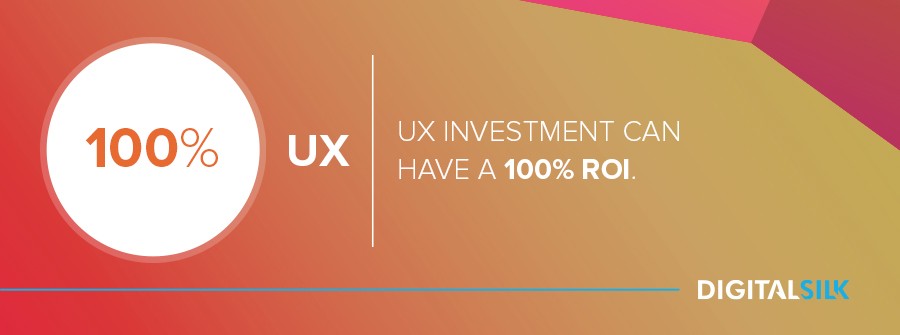
3. UX & UI Design
88% of online shoppers say they wouldn’t return to a website after having a bad user experience.
User experience is an essential component of a website and a gateway to user satisfaction – not just for eCommerce websites.
The website design process consists of two stages:
- User Experience (UX) Design: At this stage, UX experts interpret the website plan into black-and-white page sketches, i.e. wireframes. The wireframes are meant to show the content layout and visualize the conversion funnel without distracting elements such as color and photography. Depending on the digital strategy insights, agencies either develop responsive websites or desktop-first with designs scaled to mobile, or they design mobile-first which is the exact opposite.
- User Interface (UI) Design: With wireframes approved, the web design team moves to the finer details that bring the website to life. At this stage, UI designers add color and imagery, define fonts and shapes, and other effects to wireframes.
The approved UI design is then converted into a style guide and passed on to the development team.
4. Style Guide
The design team creates a style guide for the client’s website to ensure consistency across the site, as well as maintain this consistency as the website grows.
Style guides most commonly define the use of these elements across the website:
- Logos: Full menu vs. contracted menu – this is just one of the contexts that designers address when creating instructions for the logo usage, including size, color and version.
- Colors: From buttons to header and other text, designers determine which colors are to be applied to which elements.
- Image and photography: This is where designers create guidelines for the types of illustrations and imagery to use, as well as their color treatment.
- Typography: Designers set guidelines around font usage in headers, paragraphs, links and more. These guidelines include font types, weights, colors, kerning, line spacing and more.
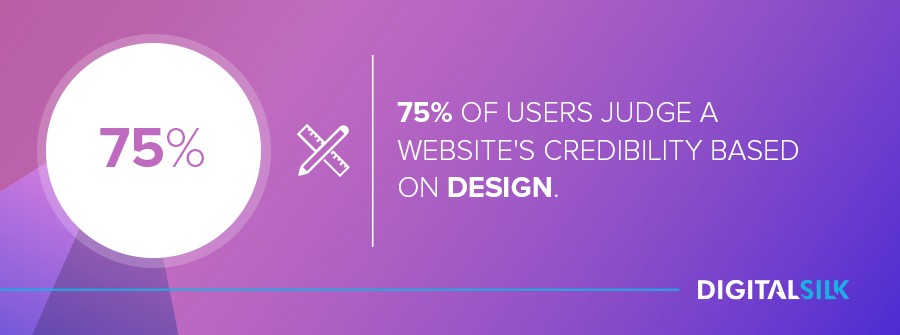
5. Frontend/Backend Development
The website’s frontend and backend play a crucial role in website development.
Frontend is about the visual aspects of the website a user can see and experience. Backend is responsible for everything that happens in the background which enables the frontend experience.
Frontend web developers and designers build websites keeping the visual aspects in mind, while backend developers make sure the data and system requested by the frontend application or software are delivered efficiently.
Frontend is often referred to as the client side while backend is the server side of the website. Backend development languages include Java, PHP, .Net, Ruby and Python, while the most common frontend languages are HTML, CSS and JavaScript.
If you are wondering what to ask developers before building your new website, here is our article about the most important questions when hiring a web design and development agency.
6. QA
Before launching the website, it is necessary to test it internally by recruiting real users to do so.
During this quality assessment phase, web design and digital agencies test all the links and content, as well as technical functionalities such as forms, sign-ups and other features.
The user feedback is crucial at this point as it can convey the information about what the website should provide to them.
The digital strategist’s responsibility is to ascertain whether the website CMS:
- Has a good user experience
- Works properly
- Is easy to use
QA best practices dictate that the website is reviewed on multiple browsers and tested on multiple devices.
Check out this video of our Digital Silk CEO explaining his approach to web design analysis. This will give you a glimpse into why it’s important to follow a detailed process.
7. Launch & Post Launch
When preparing to take the website live, the website design company team is responsible for the following:
- Ask the client whether they prefer their own hosting plan or if they have chosen the agency’s own hosting package
- Send an email to the client informing them that the team plans to take their website live and that they need access to the client’s domain so the agency can transfer it to Cloudflare for security and management
- Follow a multi-step checklist to ensure a smooth launch
Post-launch maintenance is a vital part of making sure a running website performs consistently, issue-free and is able to deliver the set goals. A web design agency that performs post-launch maintenance checks will:
- Create full website backups in regular intervals
- Audit safety measures that prevent malware, adware and any other type of virus threats
- Perform optimization of website speed
- Update the website with new content
Why Following A Web Design Process Matters
A detailed web design process categorizes the work, breaks high-level sections into tasks and resources and prepares a freelance business for growth.
It is very important to establish and follow the website design process because it can:
- Organize the developer’s thoughts and workflow
- Provide a framework for the entire project
- Speed up a project’s timeline
- Help the clients understand what they are paying for and put their mind at ease
- Establish what the developer will deliver at certain points in the project timeline
- Outline the type of work a developer will engage in
- Remove any communication roadblocks and confusion
It is important to remember that clients often do not understand the terminology nor do they understand the steps needed to create a finished website.
Outlining the process and its steps for the client can help them understand the basics in order to appreciate what happens at each stage and to be able to provide what’s needed from them.
A client who understands the process and its importance will be able to communicate with the agency more knowledgeably.
Website UX Planning: How To Plan Your Website Structure/Wireframe
Planning a website wireframe, which is a visual representation of content layout in a design, is important because it helps the agency team organize and simplify the content within a space.
It also brings these benefits:
- A wireframe gives clients, developers and designers an opportunity to take a look at the structure of a website and make revisions early in the process.
- It can inspire the designer and make for a more fluid creative process.
- Developers get a clear picture of the elements they need to code
The process of planning the website user experience is related most closely to creating a sitemap.
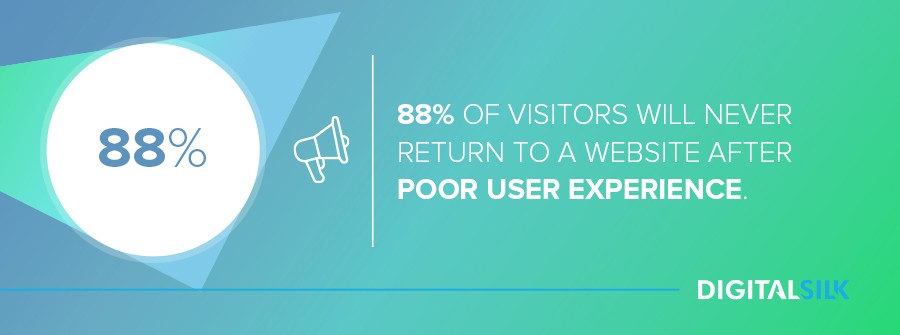
How To Plan The Sitemap
When web design teams approach sitemap creation, they consider the client’s brand and product, objectives they should achieve within the website, the target audience’s behavior and habits and the website’s unique value propositions.
The team plans the sitemap in a way that fits the target audience’s behavior and creates an optimal conversion funnel to turn visitors into leads and convert leads into customers.
Agencies strive to create the easiest and shortest path to the right information, avoiding any structure that may confuse or turn customers away from the website.
Responsive UX Planning: How To Optimize User Experience Across Devices
Designing a website for mobile devices and planning its user experience forces designers to ask certain questions about the smaller screens they have to work with, such as:
- What website features, elements and content are really necessary to appear on a mobile website?
- Is this element worth the time that it takes to load on mobile?
- What visual elements can help achieve the primary objectives for mobile users?
When planning responsive UX, it is important to note the screen resolutions and sizes relevant for responsive design, which are:
- 360×640 (small mobile): 22.64%
- 1366×768 (average laptop): 11.98%
- 1920×1080 (large desktop): 7.35%
- 375×667 (average mobile): 5%
- 1440×900 (average desktop): 3.17%
- 720×1280 (large mobile): 2.74%
When creating mobile-friendly responsive websites, UX and UI designers follow these best practices in order to complete a project according to the highest standards:
- Eliminate friction: A mobile-first approach to web design helps with evaluating what is necessary for the user to achieve their objective. Building up to the larger devices, agencies can think about secondary objectives that make primary objectives achievable. Focusing on the primary objectives of the user eliminates unnecessary friction.
- Design for thumbs: The way mobile devices are used to change the way mobile UI designers tap targets and other UI elements with which users interact. For instance, placing the main navigation at the bottom instead of the top, because thumbs can reach the bottom easily.
- Use landscape orientation: Titled elements that stack vertically on mobile could display as a slider with left and right navigation buttons so the user doesn’t have to scroll.
- Use conditional loading: Some website elements aren’t worth the extra load time and as digital agencies want their websites to be simple, hiding them can make sense in some instances. Since these elements can waste bandwidth and browser resources even when they’re hidden, it’s best to include these elements only in certain conditions.
- Use responsive images: Designers can tailor images to the correct device by making sure to export at all the resolutions used on today’s devices.
Website UI Planning: How To Design An On-Brand & Highly Engaging Interface
When planning the website user interface, the best practices dictate that agencies follow the user journey.
Website elements should be laid out naturally without adding any confusion to the user experience. The website should provide a feeling of familiarity to visitors who should be able to immediately understand how to behave and what actions to take.
A good website product takes the basis of good UI and enhances it with imagery, colors and animation to create a unique UX.
Key Takeaways On The Website Design Process
Digital agencies’ website design process consists of the following steps:
- Digital strategy
- Website planning
- UX and UI design
- Style guide
- Frontend/backend development
- QA
- Launch and post-Launch
Following this established web design process is important because it:
- Organizes the workflow of design and development
- Provides the framework for the project
- Helps the client understand the vision and monitor the project as it makes progress
- Establishes what will be delivered at a certain stage of the project timeline
- Removes communication roadblocks and confusion
"*" indicates required fields




